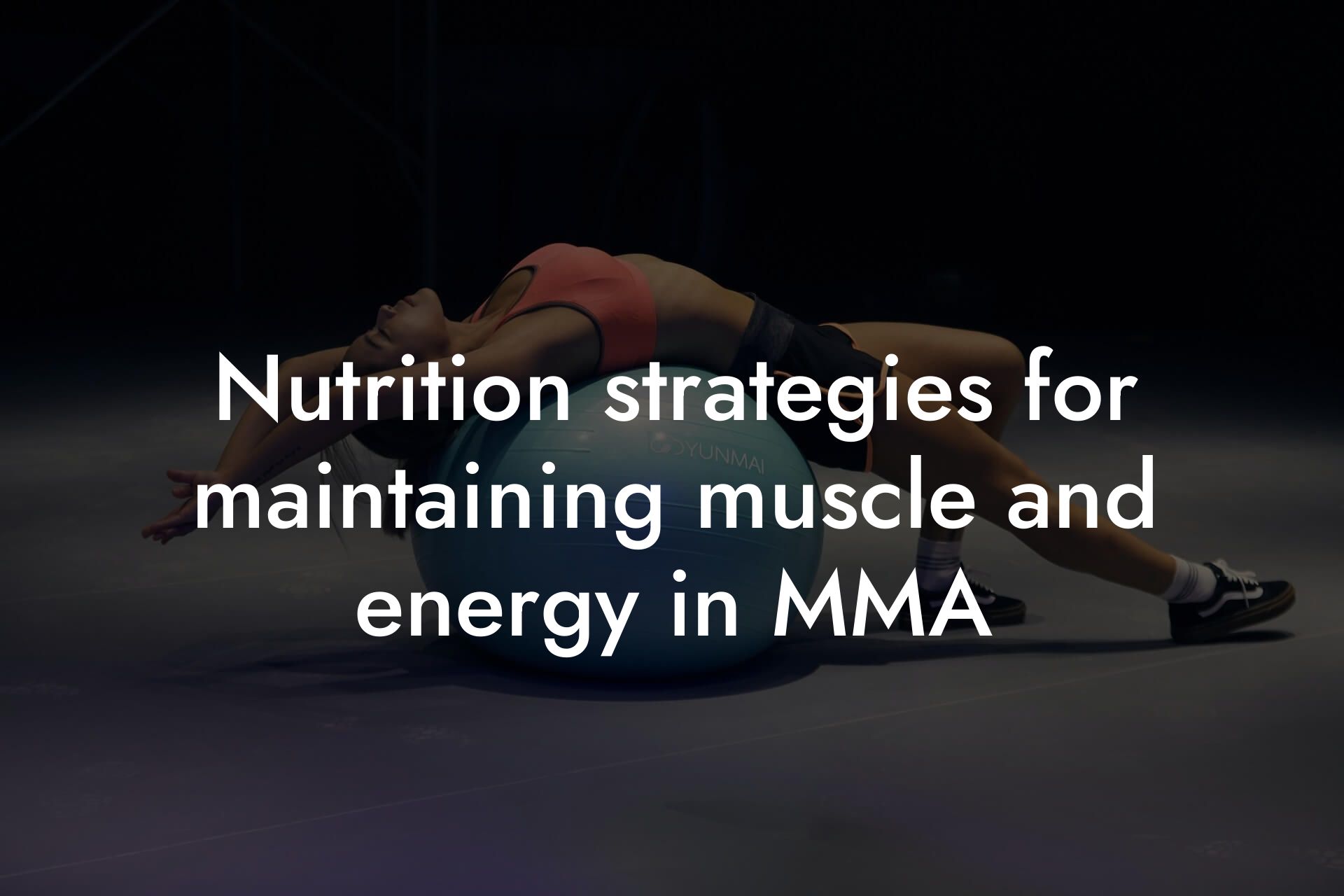As a high-earning professional interested in maintaining a healthy physique, you understand the importance of prioritizing your bone density and injury prevention. Mixed Martial Arts (MMA) is a physically demanding sport that requires a combination of strength, agility, and endurance. However, the intense training and competition can put a tremendous amount of stress on your bones, increasing the risk of injuries and osteoporosis. In this article, we will delve into the world of bone density and injury prevention in MMA, providing you with a comprehensive guide to help you optimize your training and minimize the risk of injuries.
Table of Contents
The Importance of Bone Density in MMA
Bone density is a critical aspect of overall health, particularly in high-impact sports like MMA. As you engage in intense training and competition, your bones are subjected to repeated stress and impact, which can lead to micro-fractures and bone loss. Low bone density can increase the risk of osteoporosis, fractures, and other injuries, ultimately affecting your performance and longevity in the sport. Maintaining optimal bone density is essential to ensure that your bones can withstand the physical demands of MMA.
Factors Affecting Bone Density in MMA Athletes
Several factors can influence bone density in MMA athletes, including:
- Genetics: Family history and genetic predisposition can play a role in bone density.
- Nutrition: Adequate calcium and vitamin D intake are essential for maintaining strong bones.
- Hormonal Imbalance: Hormonal changes, particularly in testosterone and estrogen levels, can affect bone density.
- Training Volume and Intensity: High-impact training and repeated stress on bones can lead to bone loss.
- Age: Bone density naturally decreases with age, making older athletes more susceptible to osteoporosis.
The Risks of Low Bone Density in MMA
Low bone density can have severe consequences for MMA athletes, including:
- Increased Risk of Fractures: Weakened bones are more prone to fractures, which can lead to prolonged recovery periods and decreased performance.
- Osteoporosis: Low bone density can increase the risk of osteoporosis, a condition characterized by brittle and porous bones.
- Chronic Pain: Weakened bones can lead to chronic pain and discomfort, affecting overall quality of life.
- Decreased Performance: Low bone density can impact athletic performance, reducing speed, agility, and endurance.
Injury Prevention Strategies for MMA Athletes
To minimize the risk of injuries and optimize bone density, MMA athletes can implement the following strategies:
- Incorporate Resistance Training: Resistance exercises, such as weightlifting and bodyweight exercises, can help strengthen bones and improve overall muscle mass.
- Focus on Proper Technique: Proper technique and form can reduce the risk of injuries and minimize stress on bones.
- Incorporate Low-Impact Training: Low-impact training, such as yoga and Pilates, can help improve flexibility and reduce the risk of injuries.
- Prioritize Nutrition: Adequate calcium and vitamin D intake, as well as a balanced diet, are essential for maintaining strong bones.
- Get Enough Rest and Recovery: Adequate rest and recovery are critical for allowing bones to repair and rebuild.
The Role of DEXA Scans in Bone Density Assessment
DEXA (Dual-Energy X-ray Absorptiometry) scans are a non-invasive and highly accurate method for assessing bone density. DEXA scans use low-level X-rays to measure bone density in various parts of the body, providing a comprehensive picture of overall bone health. At Tano Performance Group, we utilize DEXA scans as part of our comprehensive body assessment, providing high-earning professionals with a detailed understanding of their bone density and overall health.
How to Improve Bone Density in MMA Athletes
To improve bone density, MMA athletes can implement the following strategies:
- Engage in High-Impact Training: High-impact training, such as jump training and resistance exercises, can help stimulate bone growth and density.
- Incorporate Weight-Bearing Exercises: Weight-bearing exercises, such as squats and lunges, can help strengthen bones and improve overall muscle mass.
- Focus on Proper Nutrition: Adequate calcium and vitamin D intake, as well as a balanced diet, are essential for maintaining strong bones.
- Get Enough Vitamin D: Vitamin D is critical for bone health, and deficiencies can lead to weakened bones.
- Avoid Smoking and Excessive Alcohol Consumption: Both smoking and excessive alcohol consumption can negatively impact bone density.
Bone density and injury prevention are critical aspects of overall health and performance in MMA. By understanding the factors that affect bone density, implementing injury prevention strategies, and utilizing DEXA scans for assessment, MMA athletes can optimize their training and minimize the risk of injuries. At Tano Performance Group, we are committed to providing high-earning professionals with the tools and knowledge they need to achieve their fitness goals and maintain optimal health. By prioritizing bone density and injury prevention, you can take your training to the next level and achieve success in the world of MMA.
Frequently Asked Questions
What is bone density and why is it important for MMA athletes?
Bone density refers to the amount of minerals, such as calcium and phosphorus, present in bones. It's a critical aspect of overall health, especially for MMA athletes, as it directly affects the risk of fractures and osteoporosis. Maintaining optimal bone density is essential for MMA fighters to prevent injuries, improve performance, and extend their careers.
How does MMA training affect bone density?
MMA training can have both positive and negative effects on bone density. On the one hand, weight-bearing exercises, such as wrestling and Brazilian jiu-jitsu, can help improve bone density. On the other hand, high-impact activities, like kickboxing and striking, can increase the risk of fractures and bone loss. A balanced training program that includes strength training, flexibility exercises, and proper nutrition is crucial to maintaining healthy bone density.
What are the risks of low bone density for MMA athletes?
Low bone density can lead to an increased risk of fractures, osteoporosis, and other musculoskeletal injuries. This can result in prolonged recovery periods, reduced performance, and even premature retirement from the sport. Furthermore, low bone density can also affect overall health, leading to conditions like osteopenia and osteoporosis, which can have long-term consequences.
How can MMA athletes improve their bone density?
MMA athletes can improve their bone density through a combination of proper nutrition, strength training, and flexibility exercises. A diet rich in calcium, vitamin D, and protein is essential for bone health. Additionally, exercises that focus on strengthening the core, legs, and hips, such as squats, deadlifts, and lunges, can help improve bone density. It's also important to incorporate flexibility exercises, like yoga or Pilates, to improve joint mobility and reduce the risk of injury.
What role does nutrition play in bone density for MMA athletes?
Nutrition plays a critical role in maintaining healthy bone density for MMA athletes. A diet rich in calcium, vitamin D, and protein is essential for bone health. Foods high in calcium, such as dairy products, leafy greens, and fortified plant-based milk, can help support bone growth and density. Vitamin D, found in fatty fish, egg yolks, and fortified dairy products, is also crucial for calcium absorption and bone health. Adequate protein intake, from sources like lean meats, fish, and plant-based options, is necessary for muscle growth and repair.
Can supplements help improve bone density for MMA athletes?
While supplements can be beneficial, they should not replace a balanced diet and regular exercise. Calcium and vitamin D supplements can help fill nutritional gaps, but it's essential to consult with a healthcare professional or registered dietitian to determine the appropriate dosage and type of supplement. Additionally, some supplements, like protein powder and creatine, can support muscle growth and repair, which can indirectly benefit bone density.
How can MMA athletes prevent injuries related to bone density?
MMA athletes can prevent injuries related to bone density by incorporating injury prevention strategies into their training program. This includes warming up and cooling down properly, incorporating strength and flexibility exercises, and listening to their bodies to avoid overtraining. Additionally, proper technique, equipment, and safety protocols should be followed during training and competition to minimize the risk of injury.
What are the most common injuries related to bone density in MMA?
The most common injuries related to bone density in MMA include stress fractures, vertebral fractures, and osteochondral injuries. These injuries can occur due to repetitive trauma, poor technique, or inadequate training. MMA athletes should be aware of the risks and take proactive steps to prevent these injuries, including incorporating strength and flexibility exercises, improving their technique, and listening to their bodies.
How can MMA athletes recover from bone density-related injuries?
Recovery from bone density-related injuries requires a comprehensive approach that includes rest, rehabilitation, and nutrition. MMA athletes should allow their bodies time to heal, incorporating low-impact exercises and gradual progression back to full training. A balanced diet rich in calcium, vitamin D, and protein is essential for supporting bone health and recovery. Additionally, physical therapy and rehabilitation exercises can help improve strength, flexibility, and range of motion.
What role does age play in bone density for MMA athletes?
Age is a critical factor in bone density for MMA athletes. Peak bone density is typically reached in the mid-to-late 20s, and after that, bone density begins to decline. As MMA athletes age, they may experience a decline in bone density, making them more susceptible to injuries and osteoporosis. It's essential for older MMA athletes to prioritize bone health through proper nutrition, exercise, and injury prevention strategies.
Can MMA athletes with low bone density still compete at a high level?
While low bone density can increase the risk of injury, it's not necessarily a barrier to competing at a high level. With proper training, nutrition, and injury prevention strategies, MMA athletes with low bone density can still perform well. However, it's essential to work with a healthcare professional or registered dietitian to develop a personalized plan that addresses their specific needs and risk factors.
How can MMA athletes monitor their bone density?
MMA athletes can monitor their bone density through regular bone density scans, such as dual-energy X-ray absorptiometry (DXA) or quantitative computed tomography (QCT). These scans can provide valuable insights into bone health and density, allowing athletes to make informed decisions about their training and nutrition. Additionally, regular check-ups with a healthcare professional or registered dietitian can help identify potential issues before they become severe.
What are the long-term consequences of low bone density for MMA athletes?
The long-term consequences of low bone density for MMA athletes can be severe. Osteoporosis, osteopenia, and other musculoskeletal conditions can lead to chronic pain, reduced mobility, and decreased quality of life. Furthermore, low bone density can increase the risk of fractures, which can have long-term consequences for overall health and athletic performance.
Can MMA athletes with osteoporosis or osteopenia still train and compete?
While osteoporosis and osteopenia can present challenges for MMA athletes, it's not necessarily a barrier to training and competing. With proper management, including medication, nutrition, and exercise, athletes can mitigate the risks associated with these conditions. However, it's essential to work with a healthcare professional or registered dietitian to develop a personalized plan that addresses their specific needs and risk factors.
How can MMA athletes balance training and recovery to maintain healthy bone density?
MMA athletes can balance training and recovery to maintain healthy bone density by prioritizing rest, nutrition, and recovery. This includes incorporating low-impact exercises, active recovery techniques, and proper nutrition to support bone health. Additionally, listening to their bodies and avoiding overtraining can help prevent injuries and maintain optimal bone density.
What role does genetics play in bone density for MMA athletes?
Genetics can play a role in bone density for MMA athletes, as some individuals may be more prone to low bone density due to their genetic makeup. However, while genetics can influence bone density, it's not the sole determining factor. A healthy diet, regular exercise, and proper training can help mitigate the risks associated with genetic predisposition.
Can MMA athletes improve their bone density through yoga or Pilates?
Yes, MMA athletes can improve their bone density through yoga or Pilates. These low-impact exercises can help improve flexibility, balance, and strength, which can indirectly benefit bone density. Additionally, yoga and Pilates can help reduce the risk of injury and improve overall mobility, making them valuable additions to an MMA training program.
How can MMA athletes incorporate strength training to improve bone density?
MMA athletes can incorporate strength training to improve bone density by focusing on exercises that target the core, legs, and hips. This includes exercises like squats, deadlifts, and lunges, which can help improve bone density and reduce the risk of injury. It's essential to work with a qualified trainer or coach to develop a personalized strength training program that addresses specific needs and goals.
What are the benefits of incorporating flexibility exercises into an MMA training program?
Incorporating flexibility exercises into an MMA training program can have numerous benefits, including improved range of motion, reduced risk of injury, and enhanced athletic performance. Flexibility exercises, such as yoga or Pilates, can also help improve bone density by reducing the risk of fractures and osteoporosis.
Can MMA athletes use technology, such as wearable devices, to track their bone density?
While wearable devices can track various health metrics, they are not currently able to track bone density. However, MMA athletes can use technology to track other health metrics, such as heart rate, sleep quality, and nutrition, which can indirectly benefit bone health. Additionally, some apps and platforms can provide personalized nutrition and training plans to support bone health.
Here are some related articles you might love...
- Reducing body fat for optimal weight class in MMA
- Nutrition strategies for maintaining muscle and energy in MMA
- Strength and conditioning programs for MMA fighters
- Off-season training and conditioning for MMA fighters
- The role of DEXA scans in MMA training and weight management
- The importance of lean muscle mass in MMA performance
- Recovery techniques for MMA athletes after fights
- How body composition affects performance in MMA
- Balancing power, speed, and agility in MMA training
Zak Faulkner
Zak Faulkner is a leading authority in the realm of physical health and body composition analysis, with over 15 years of experience helping professionals optimise their fitness and well-being. As one the experts behind Tano Performance Group, Zak has dedicated his career to providing in-depth, science-backed insights that empower clients to elevate their physical performance and overall health.
With extensive knowledge of DEXA technology, Zak specializes in delivering comprehensive body assessments that offer precise data on body fat, muscle mass, bone density, and overall physique. His expertise enables individuals to make informed decisions and achieve their fitness goals with accuracy and confidence. Zak’s approach is rooted in a deep understanding of human physiology, combined with a passion for helping clients unlock their full potential through personalised strategies.
Over the years, Zak has earned a reputation for his commitment to excellence, precision, and client-focused service. His guidance is trusted by top professionals who demand the best when it comes to their health. Whether advising on fitness programs, nutritional strategies, or long-term wellness plans, Zak Faulkner’s insights are a valuable resource for anyone serious about taking their health and fitness to the next level.
At Tano Performance Group, Zak continues to lead our Content Team revolutionising how professionals approach their physical health, offering unparalleled expertise that drives real results.




